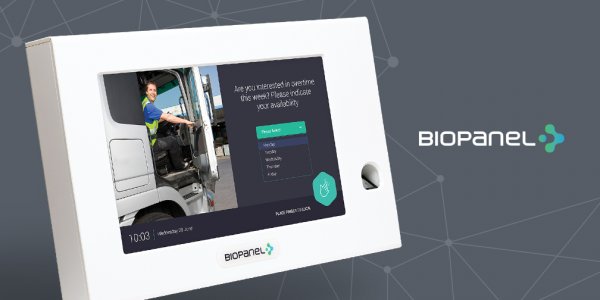Employee recognition schemes have always followed the same philosophy; you can’t put a price on loyal and dedicated employees – and rewarding employees is a key way to boost productivity and loyalty. These schemes exist to retain talent and they do so not with money, but by recognising employees – a fair wage is no longer the powerful retainer it once was. In 2015, employees require extra satisfaction to remain engaged.
Whereas these schemes used to focus on Employee of the Month, Employee of the Year, Salesperson of the Year and other rewards (which do work in some environments, such as call centres), they now lean more towards meaningful rewards to improve performance and influence behaviour.
And they work – one company, Bersin & Associates, found that modern recognition schemes dramatically improved employee engagement [PR] and with the fact that the global employee recognition scheme market is worth an estimated £25 billion ($46 billion) [Forbes], it is safe to say that other companies are having plenty of success too.
Let’s take a look at 3 inspirational employee recognition schemes that have worked:
 E.ON has had its fair share of negative publicity born from poor customer service in recent times, which is why ‘Buzz’, their employee recognition scheme, was born.
E.ON has had its fair share of negative publicity born from poor customer service in recent times, which is why ‘Buzz’, their employee recognition scheme, was born.
Developed bespoke by P&MM, ‘Buzz’ is an online recognition platform that delivers thank you messages from colleagues and customers to employees, to keep them motivated. Both teams and individuals can be buzzed and the system has proven to be a fantastic motivation and recognition tool – and an essential tool for managers to monitor employee performance.
Here are the results:
E.ON’s scheme required a lot of money to get off the ground – but the results far outweigh the initial investment. If that’s not inspiring, we don’t know what is!
Deborah Spence, internal communications and engagement consultant at E.On, said:
“Buzz gives us a really effective way to show our appreciation to [employees] and it also gives them a way to thank each other.
It is making recognition a cost-effective, daily occurrence with a high level of employee engagement, involvement and credibility.
Buzz has created an informal culture of recognition in which the focus is applauding examples of good practice or customer service valued by all the people who matter, our employees and customers, and not only the most senior managers.”
The full details of this recognition scheme can be found here.
 BI WORLDWIDE took on a global financial services client that needed to develop a process for employees and managers to recognise one another for their hard work to increase satisfaction and performance.
BI WORLDWIDE took on a global financial services client that needed to develop a process for employees and managers to recognise one another for their hard work to increase satisfaction and performance.
BIW’s solution was an initiative in which each month those who received recognition were entered into a draw for awards – thus motivating everybody to be exceptional. Each month, managers can also dish out additional rewards, and like E.ON’s Buzz BIW’s solution has proven to be a valuable tool for management.
Here are the results:
A large proportion of the success of this scheme can be attributed to what people can be rewarded for – outstanding work, outstanding teamwork and supporting business transformation are just a few of these things, and they’re highly relevant to BIW’s client’s workforce.
Mike Davies, Managing Director at BIW, said:
“Modern recognition programmes are an essential part of a company’s culture. The best designed ones encapsulate and reinforce the values of the business, so are meaningful to all employees. The application of the principles of behavioural economics and socialising of the recognition experience are all growing trends that we have embraced and put to great use for our clients.”
The full details of this recognition scheme can be found here.
 Telefonica’s recognition scheme is all about being social. They partnered with creative communications agency, Avvio Reply, who developed a mobile application that works with Yammer, an interactive chat platform, so that colleagues can recognise one another across the Telefonica network. Each employee has their own page so they can see how much recognition they have and there is a general feed – like on Facebook – which colleagues can view to see the latest.
Telefonica’s recognition scheme is all about being social. They partnered with creative communications agency, Avvio Reply, who developed a mobile application that works with Yammer, an interactive chat platform, so that colleagues can recognise one another across the Telefonica network. Each employee has their own page so they can see how much recognition they have and there is a general feed – like on Facebook – which colleagues can view to see the latest.
Telefonica’s latest employee recognition scheme builds on one launched in 2013 called Discover, Disrupt and Deliver. In this, people can nominate other colleagues for an award – the winners attend a black tie event.
Here are the results:
Telefonica’s recognition scheme is unique because it makes use of the latest technologies like smartphones and trends such as BYOD to engage. However, it merges BIW’s idea of giving out rewards to the best performers also for a powerful recognition scheme.
Natasha Rice, deputy global reward director at Telefonica, said:
“We are evolving into a digital services organisation. We want all our employees to deliver great digital products to our customers, so it’s important that it feels like we are digital on the inside too.
The more we can link our internal HR processes to technology, the better in my view. It’s fun and it’s easy.
Technology should not be something that people are afraid of. Plus, if you’re trying to do something in a global way, you can’t do it without technology.”
The full details of this recognition scheme can be found here.
It is plain to see that employee recognition schemes can be hugely beneficial for all organisations. Rather than throw money at individuals like in the old days, they now take a different tact and engage employees through additional high-value communication in order to retain the best talent and attract the best in the marketplace. P&MM, BI WORLDWIDE and Avvio Reply have taken this concept and applied it beautifully, with impressive results for their clients. But let us not pretend that such schemes are going to always be right for you – your employees may require something a little bit different to stay engaged.
If you are concerned about sourcing, training and retaining the best talent, you are not alone. Most organisations are. What these agencies managed to do is find the right recognition and engagement platform based on their clients’ culture, vision, and values. For you to do the same, you are going to have to invest in research and trial schemes to test their effectiveness.
NEXT POST: THE 21 MOST OUTRAGEOUS SICK DAY EXCUSES YOU’VE EVER HEARD

With the ability to implement direct engagement utilising Biopanel across the remaining workforce within 20 minutes of notification of the issue, key data was gathered surrounding the reasons for the spike in attrition. The data gathered revealed concerns amongst the incumbent workforce surrounding rates of pay.
Read news article
Did you know that offering flexible working is the top attractor for the top talent? In 2019, skilled workers are high in demand and hard to place. This is due to the demand for better working conditions and benefits in the workplace. Office’s such as WeWork, Amazon, Google and Facebook have upped our expectations of what we want from working life.
Read news article
Did you know that 20% of women in the IT sector leave their job due to Gender Pay Gap Inequalities? So what does 'Gender Reporting' mean and what is its importance?
Read news article